Zehui Yang
The Conversational Short-phrase Speaker Diarization (CSSD) Task: Dataset, Evaluation Metric and Baselines
Aug 17, 2022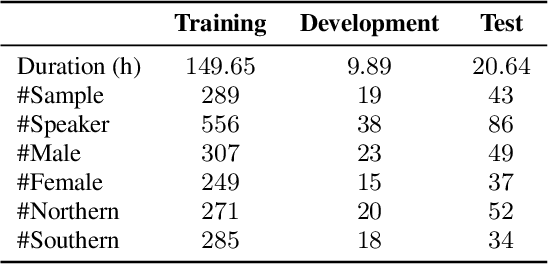
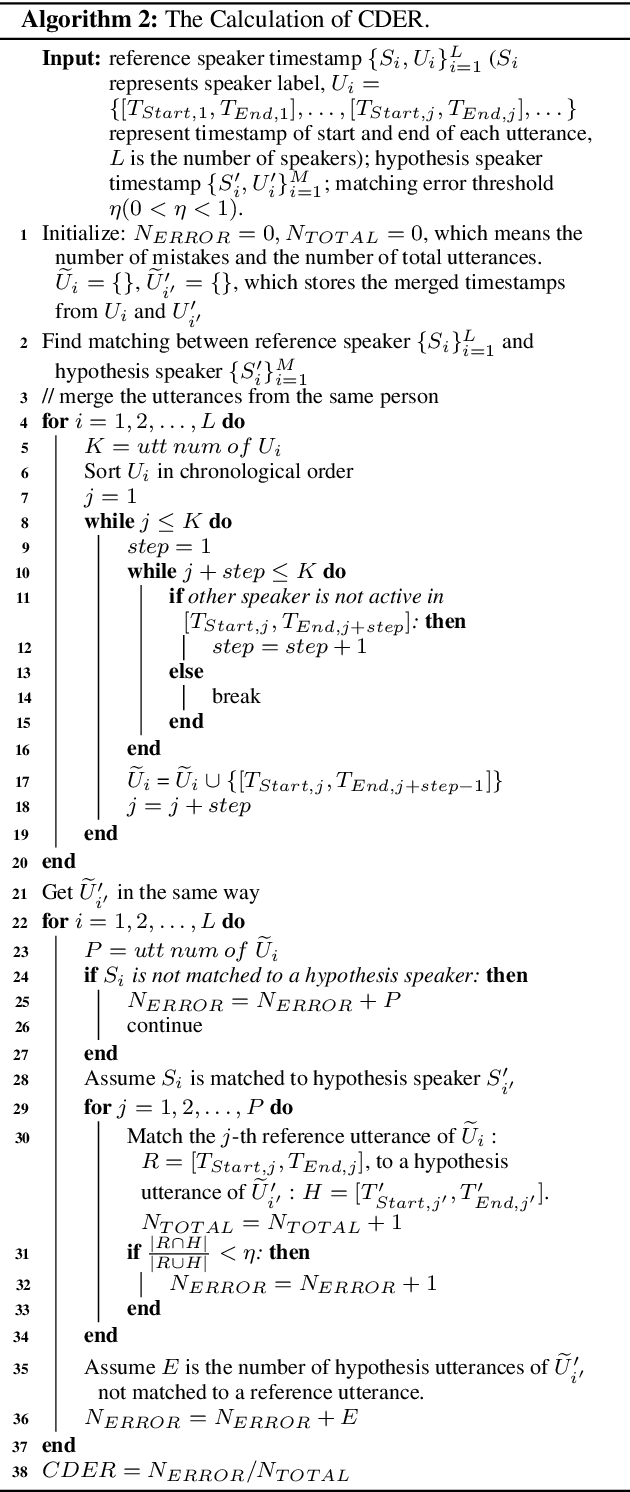
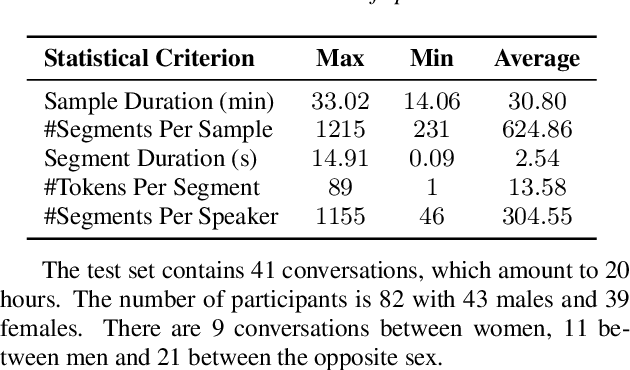
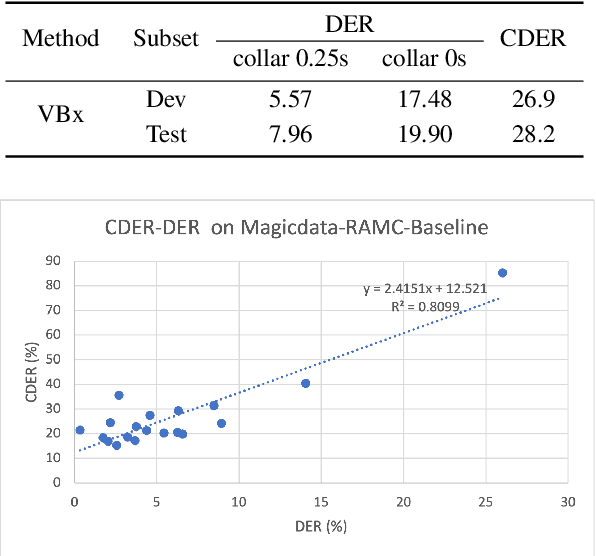
Abstract:The conversation scenario is one of the most important and most challenging scenarios for speech processing technologies because people in conversation respond to each other in a casual style. Detecting the speech activities of each person in a conversation is vital to downstream tasks, like natural language processing, machine translation, etc. People refer to the detection technology of "who speak when" as speaker diarization (SD). Traditionally, diarization error rate (DER) has been used as the standard evaluation metric of SD systems for a long time. However, DER fails to give enough importance to short conversational phrases, which are short but important on the semantic level. Also, a carefully and accurately manually-annotated testing dataset suitable for evaluating the conversational SD technologies is still unavailable in the speech community. In this paper, we design and describe the Conversational Short-phrases Speaker Diarization (CSSD) task, which consists of training and testing datasets, evaluation metric and baselines. In the dataset aspect, despite the previously open-sourced 180-hour conversational MagicData-RAMC dataset, we prepare an individual 20-hour conversational speech test dataset with carefully and artificially verified speakers timestamps annotations for the CSSD task. In the metric aspect, we design the new conversational DER (CDER) evaluation metric, which calculates the SD accuracy at the utterance level. In the baseline aspect, we adopt a commonly used method: Variational Bayes HMM x-vector system, as the baseline of the CSSD task. Our evaluation metric is publicly available at https://github.com/SpeechClub/CDER_Metric.
Open Source MagicData-RAMC: A Rich Annotated Mandarin Conversational Speech Dataset
Mar 31, 2022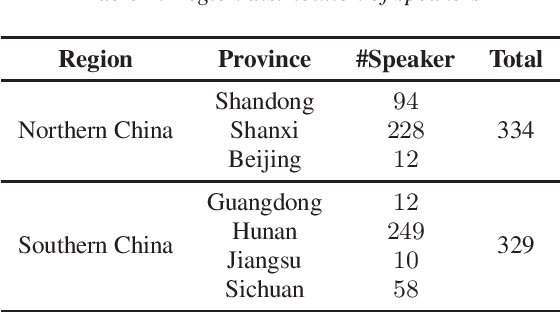
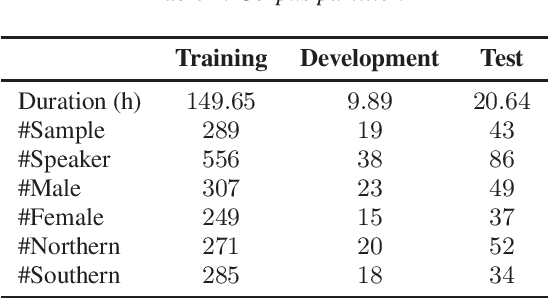
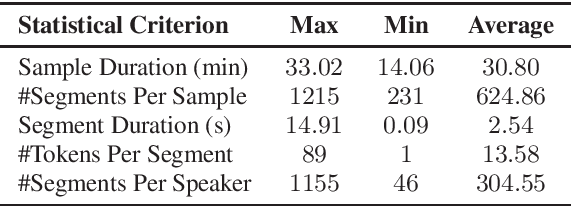
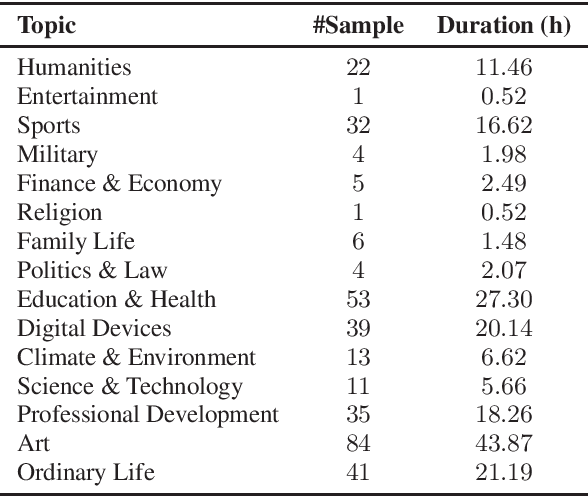
Abstract:This paper introduces a high-quality rich annotated Mandarin conversational (RAMC) speech dataset called MagicData-RAMC. The MagicData-RAMC corpus contains 180 hours of conversational speech data recorded from native speakers of Mandarin Chinese over mobile phones with a sampling rate of 16 kHz. The dialogs in MagicData-RAMC are classified into 15 diversified domains and tagged with topic labels, ranging from science and technology to ordinary life. Accurate transcription and precise speaker voice activity timestamps are manually labeled for each sample. Speakers' detailed information is also provided. As a Mandarin speech dataset designed for dialog scenarios with high quality and rich annotations, MagicData-RAMC enriches the data diversity in the Mandarin speech community and allows extensive research on a series of speech-related tasks, including automatic speech recognition, speaker diarization, topic detection, keyword search, text-to-speech, etc. We also conduct several relevant tasks and provide experimental results to help evaluate the dataset.
Improving non-autoregressive end-to-end speech recognition with pre-trained acoustic and language models
Jan 26, 2022



Abstract:While Transformers have achieved promising results in end-to-end (E2E) automatic speech recognition (ASR), their autoregressive (AR) structure becomes a bottleneck for speeding up the decoding process. For real-world deployment, ASR systems are desired to be highly accurate while achieving fast inference. Non-autoregressive (NAR) models have become a popular alternative due to their fast inference speed, but they still fall behind AR systems in recognition accuracy. To fulfill the two demands, in this paper, we propose a NAR CTC/attention model utilizing both pre-trained acoustic and language models: wav2vec2.0 and BERT. To bridge the modality gap between speech and text representations obtained from the pre-trained models, we design a novel modality conversion mechanism, which is more suitable for logographic languages. During inference, we employ a CTC branch to generate a target length, which enables the BERT to predict tokens in parallel. We also design a cache-based CTC/attention joint decoding method to improve the recognition accuracy while keeping the decoding speed fast. Experimental results show that the proposed NAR model greatly outperforms our strong wav2vec2.0 CTC baseline (15.1% relative CER reduction on AISHELL-1). The proposed NAR model significantly surpasses previous NAR systems on the AISHELL-1 benchmark and shows a potential for English tasks.
 Add to Chrome
Add to Chrome Add to Firefox
Add to Firefox Add to Edge
Add to Edge